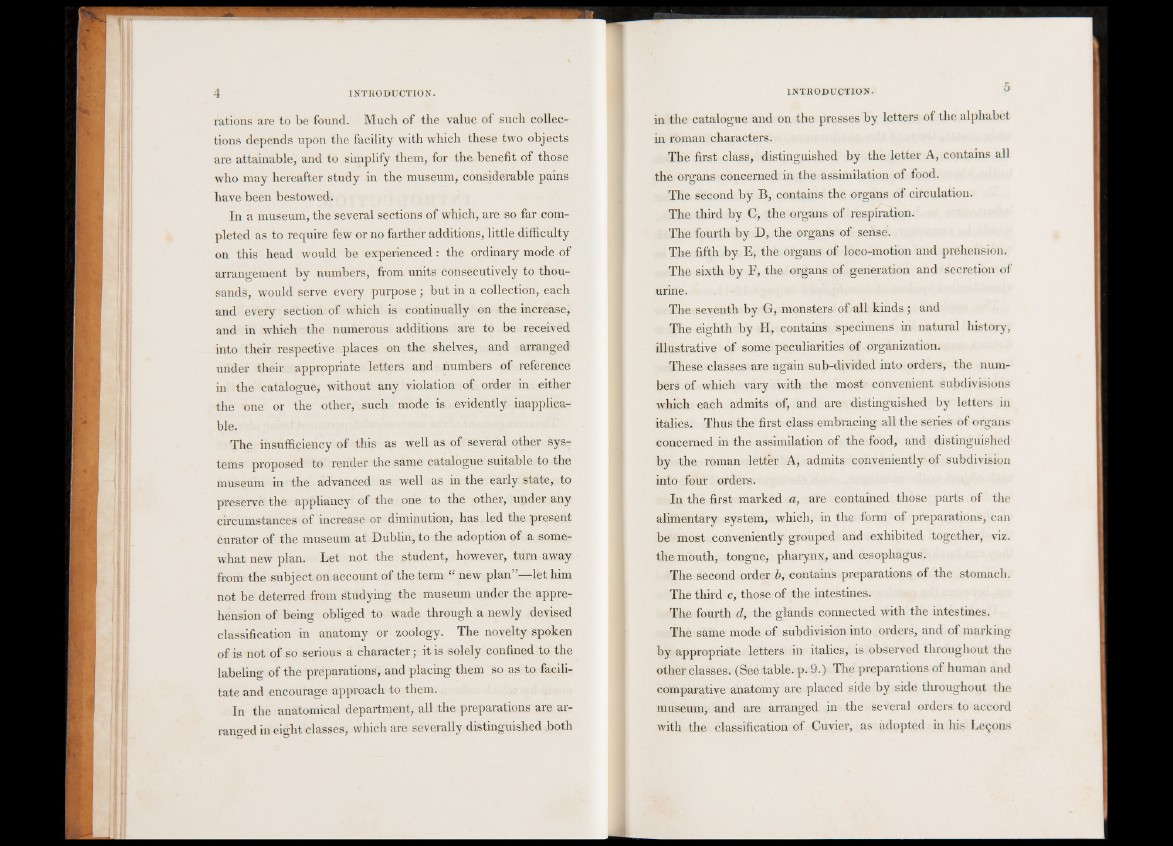
rations are to be found. Much of the value of such collections
depends upon the facility with which these two objects
are attainable, and to simplify them, for the benefit of those
who may hereafter study in the museum, considerable pains
have been bestowed.
In a museum, the several sections of which, are so far completed
as to require few or no farther additions, little difficulty
on this head would be experienced: the ordinary mode of
arrangement by numbers, from units consecutively to thousands,
would serve every purpose ; but in a collection, each
and every section of which is continually on the increase,
and in which the numerous additions are to be received
into their respective places on the shelves, and arranged
under their appropriate letters and numbers of reference
in the catalogue, without any violation of order in either
the one or the other, such mode is evidently inapplicable.
The insufficiency of this as well as of several other systems
proposed to render the same catalogue suitable to the
museum m the advanced as well as m the early state, to
preserve the appliancy of the one to the other, under any
circumstances of increase or diminution, has . led the present
curator of the museum at Dublin, to the adoption of a somewhat
new plan. Let not the student, however, turn away
from the subject on account of the term | new plan”—let him
not be deterred from studying the museum under the apprehension
of being obliged to wade through a newly devised
classification in anatomy or zoology. The novelty spoken
of is not of so serious a character ■ it is solely confined to the
labeling of the preparations, and placing them so as to facilitate
and encourage approach to them.
In the anatomical department, all the preparations are arranged
in eight classes, which are severally distinguished both
in the catalogue and on the presses by letters of the alphabet
in roman characters.
The first class, distinguished by the letter A, contains all
the organs concerned in the assimilation of food.
The second by B, contains the organs of circulation.
The third by C, the organs of respiration.
The fourth by D, the organs of sense.
The fifth by E, the organs of loco-motion and prehension.
The sixth by F, the organs of generation and secretion of
urine.
The seventh by G, monsters of all kinds ; and
The eighth by H, contains specimens in natural history,
illustrative of some peculiarities of organization.
These classes are again sub-divided into orders, the numbers
of which vary with the most convenient subdivisions
which each admits of, and are distinguished by letters in
italics. Thus the first class embracing all the series of organs
concerned in the assimilation of the food, and distinguished
by the roman letter A, admits conveniently of subdivision
into four orders.
In the first marked a, are contained those parts of the
alimentary system, which, in the form of preparations, can
be most conveniently grouped and exhibited together, viz.
the mouth, tongue, pharynx, and oesophagus.
The second order b, contains preparations of the stomach.
The third c, those of the intestines.
The fourth d, the glands connected with the intestines.
The same mode of subdivision into orders, and of marking
by appropriate letters in italics, is observed throughout the
other classes. (See table, p. 9.) The preparations of human and
comparative anatomy are placed side by side throughout the
museum, and are arranged in the several orders to accord
with the classification of Cuvier, as adopted in his Leçons